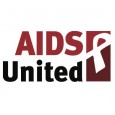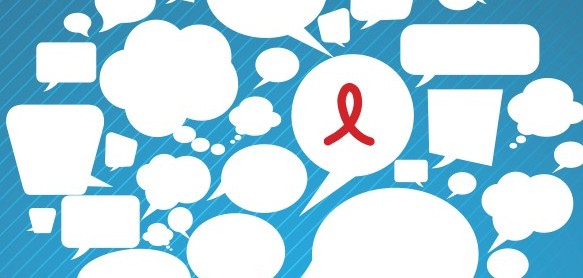This is a guest post by Emmett Patterson, Program Associate & Trainer, AIDS United
Harm reduction work is happening every day in communities across the world. Every two years, hundreds of these community leaders come together to address the most urgent issues facing the harm reduction movement at the National Harm Reduction Conference. This year, I was incredibly lucky to attend the conference in San Diego to learn more about harm reduction in its many forms—as a theory, a practice, a community, and a movement.
It didn’t take long for me to realize that harm reduction meant something different to each person who used it to guide their work. Harm reduction seemed indefinable because of its expansiveness and flexibility to apply to work toward public health, social justice, and improving drug user health.
To learn more about harm reduction and people’s individual motivations to do this work and the intersections between HIV and harm reduction, I spoke with a handful of harm reduction leaders throughout my time in San Diego. Below are some of their responses, with slight edits for clarity and length.
Timi Adediran
Timi is an epidemiologist at the Berkeley County Health Department.
To me, harm reduction means reducing the negative consequences that are related to drug use and providing linkage to services that may not be always available to individuals.
I provide harm reduction through educating the population about the risk of blood-borne pathogens and prevention of infectious blood-borne pathogens. I think a major key to harm reduction is just education.
There are so many opportunities to have HIV orgs collaborate with other movements. Providing advocacy for these marginalized groups is one way for HIV organizations to collaborate with these movements. By advocating for equal rights, it allows these individuals to be on a similar playing field with those who aren’t constantly discriminated against. Another way to collaborate is providing the necessary instruments for these groups who are consistently marginalized.
Adrien Lawyer & Zane Stephens
Adrien and Zane are both co-founders and co-directors of the Transgender Resource Center of New Mexico (TGRCNM).
For TGRCNM, harm reduction is a philosophy that pervades all of our work. It is about offering folks a range of options and letting them determine what is best for them at any time in their lives. It is about meeting people where they are and not judging or imposing our ideas of health and safety on them.
We believe that the people who access our center are brilliant, creative, resilient and resourceful, and we just aim to be partners with them in accessing resources that may not have been available before their relationship with us. We strive to offer people options and resources, and then we respect their choices about what and how to utilize those pathways.
From the time we began our work, in 2008, we set out to build strong meaningful partnerships across different movements and with organizations and people around our state. Some of these are with other HIV Prevention providers, but we also sought out connections with people in homelessness services, harm reduction, LGBTQ justice, reproductive justice, legal advocacy, people who work in domestic violence and sexual assault services and prevention and so many more. We know that in so many areas transgender people are underserved and misunderstood, so it has been our goal all along to put relationships first in order to do deep work in our state of New Mexico.
Nora Maria Fuller
Nora works as a documenter at a harm reduction collective organization in New Orleans, LA.
Harm reduction is a daily practice paired with philosophy. It’s being part of a community of people, not just giving out supplies. We support people with housing, employment, and emotional support.
I started doing harm reduction work when I was 16. I was part of a community health outreach working group in Massachusetts. After I received training from the Harm Reduction Coalition (HRC), I was able to use those lessons to better understand and provide resources to my friends and family who used. Over time, I started getting supplies from a community partner, set up a hot line, and before I knew it, we it had formed a collective organization that provided supplies and support to people who use drugs.
I had an interest in HIV since childhood. I was also exposed to the concept of White privilege as a child, which began to inform my understanding of racial politics in the U.S. I hope to be part of that real sense of solidarity with undoing racism, not engaging in prohibition. I see a unity of harm reduction, HIV, and anti-racism movements to address health, mass incarceration, and HIV together in solidarity.
Chris Abert
Chris is the Director of the Indiana Recovery Alliance.
Harm reduction is mutual aid. We take care of each other. We ask each other what we need. At the Indiana Recovery Alliance we listen to community and center community in the work. Over half of our board members are people who use drugs. We rely on community to provide vital information such as where people are using, their comfort in accessing syringe services, any barriers to getting services.
HIV organizations can help the larger harm reduction movement by providing guidance for lower expectations for data collection, especially for grant applications. We should strengthen the ties between HIV and HCV work, particularly regarding data collection. Grant makers should consider establishing longer-term grants for organizations that serve people who use drugs in order to solidify their foundation and set us up for success in the long-term. Finally, HIV organizations could host a national leadership development institute to bring together partners in harm reduction movements and the HIV movements to share knowledge around the necessary work of administration and organizational development.
Rafi Torruella
Rafi is the Executive Director of Intercambios Puerto Rico.
In my life, harm reduction is revolutionary love. Because it is a social movement, harm reduction is not just a method. It’s theory, a series of strategic tools and techniques. But it’s also a community of people who think we can change the world for the better. Harm reduction is about race, class, and gender. We want to change these structures that uphold the status quo.
Harm reduction doesn’t just show up in the work—my work is guided by it. I was working in harm reduction while also doing translational research, which allowed me to put harm reduction into practice in academia. While doing drug research, I was volunteering at a syringe exchange. Harm reduction, both in research and action, showed me that drug users have a right to health. Currently, Intercambios Puerto Rico is doing harm reduction by operating a syringe exchange with a peer-based model and working toward drug policy reform.
To help advance the harm reduction movement, NGOs can collaborate with and build solidarity with NGOs outside of their mission. LGBTQ community organizations and HIV agencies can partner with organizations that serve people who use drugs to branch horizontally, realizing the power we have when we stand together.








Comments
Comments